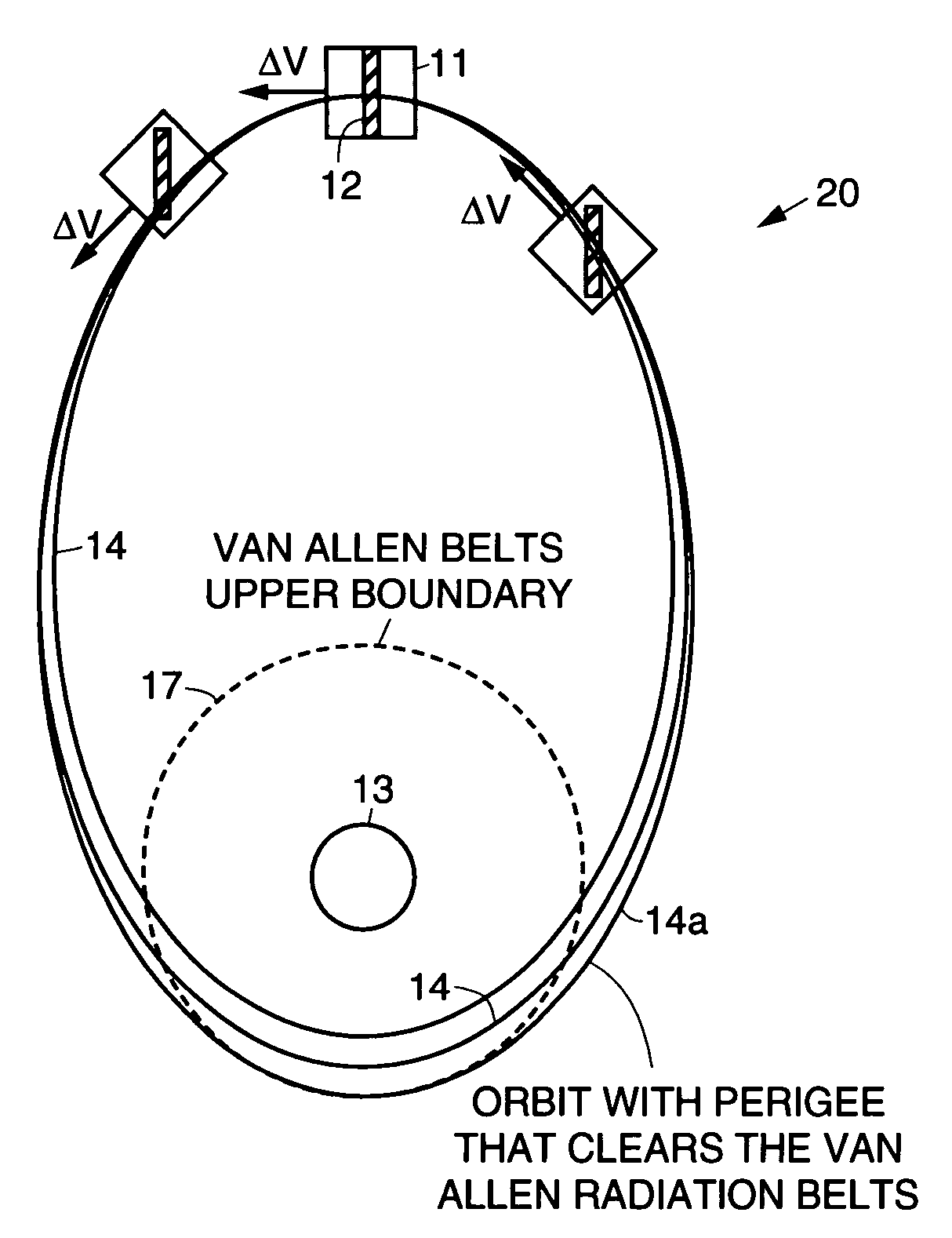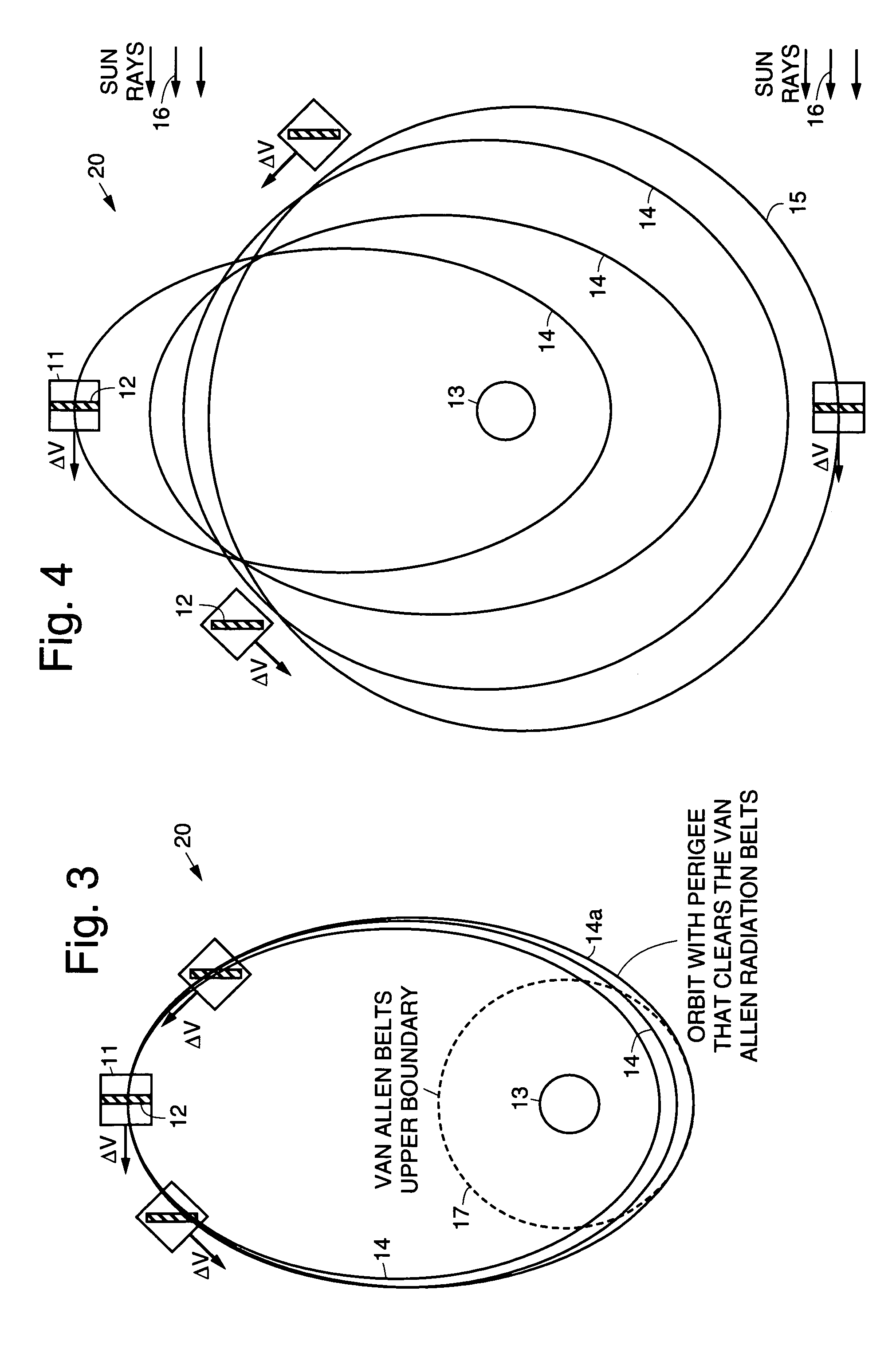Practical orbit raising system and method for geosynchronous satellites
a technology of geosynchronous satellites and raising systems, applied in the field of satellites, can solve the problems of not steering the thrust vector in the prior art technique, and achieve the effects of minimizing solar array power degradation, and maximizing payload mass and mission li
- Summary
- Abstract
- Description
- Claims
- Application Information
AI Technical Summary
Benefits of technology
Problems solved by technology
Method used
Image
Examples
Embodiment Construction
[0023]Referring to the drawing figures, FIG. 1 illustrates a conventional thruster orbit raising strategy and FIG. 2 illustrates a conventional electric propulsion maneuver strategy used in a conventional satellite orbit raising method 10 that raises a satellite 111 (or spacecraft 11) from a transfer orbit 14 to geosynchronous orbit 15. In the conventional method 10, in the chemical orbit raising strategy and the electric propulsion maneuver strategy, the orbit maneuvers are limited in terms of location and attitude to achieve and maintain the semi-major axis of the orbit near the desired geosynchronous value. Thus, the satellite 11 may be continuously observed from a single ground station on the Earth 13. The prior art strategy also does not steer the thrust vector during the orbit while also steering the solar arrays to maintain the sun's illumination on solar arrays 12 of the satellite 11 during the orbit raising maneuvers.
[0024]FIG. 3 illustrates an exemplary chemical thruster o...
PUM
 Login to View More
Login to View More Abstract
Description
Claims
Application Information
 Login to View More
Login to View More - R&D
- Intellectual Property
- Life Sciences
- Materials
- Tech Scout
- Unparalleled Data Quality
- Higher Quality Content
- 60% Fewer Hallucinations
Browse by: Latest US Patents, China's latest patents, Technical Efficacy Thesaurus, Application Domain, Technology Topic, Popular Technical Reports.
© 2025 PatSnap. All rights reserved.Legal|Privacy policy|Modern Slavery Act Transparency Statement|Sitemap|About US| Contact US: help@patsnap.com



